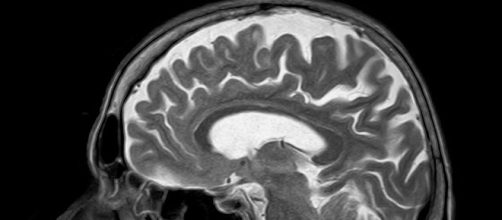What more appropriate program to test how memory functions than that famous fictional memory expert Sherlock Holmes with his mind palace? Nature Neuroscience, the British peer-reviewed science journal, carried a story in the December 5, 2016, issue, “Shared memories reveal shared structure in neural activity across individuals,” and the study used a recorded TV program The research explored how people's brains function when they remember. The experiment on 22 volunteers conducted by scientists from Stanford and Princeton Universities linked how they reacted viewing the first half of episode 1 of Sherlock, “A Study in Pink," with exactly how their brains responded when they were asked to remember and then describe the show they had just seen.
fMRI surprises
A functional Magnetic Resonance Image (fMRI) is a non-invasive brain scan which shows what parts of the brain are most active by measuring blood flow to those regions. One researcher said, “The first thing that struck us was just how good everyone’s memory was,” because on average they remembered so well that they talked about the episode for almost half as long as the entire episode lasted or more than 20 minutes, even discussing Sherlock’s hat.
But the real surprise was that when they compared the brain images during watching and later during remembering. They were nearly identical; so much so that researchers could identify what scenes the subjects were describing just from comparing the fMRI scan patterns with those taken during the viewing.
The researchers also found that everyone’s memory recall process was almost identical, not very individualistic as they had expected, showing that every one of the 22 test subjects remembered in nearly the identical way and organize memories into their personal “mind palaces” in very same patterns. This doesn't mean they all remembered everything exactly the same way - as many tests have shown, eye witnesses seldom agree - rather they all stored their memories in the same parts of the brain in very similar ways and, presumably, how a real Sherlock Holmes would.
We are all more similar than different
One researcher wrote that this will change the way neuroscientists look at just how different or how similar people are and how they think.
It had long been thought that higher level brain activity such as found in the posterior medial cortex and the medial prefrontal cortex (the part which is underdeveloped in teens and cause them to ignore consequences) was highly individualistic and only the more universal or lower functions in areas like the hippocampus, the cerebellum, and the amygdala, which we share with lower animals, were duplicated in every person.
Although everyone likes to think they are highly individualistic, the fMRI study definitely shows all of us think and remember in nearly identical ways whether we call our memory a mind palace or no. One consequence of this is that it might actually simplify neuroscience research if everyone's brain works basically the same way - even Sherlock Holmes' powerful, if fictional, brain. this has implications for medical research into brain injuries and alzheimer's.

